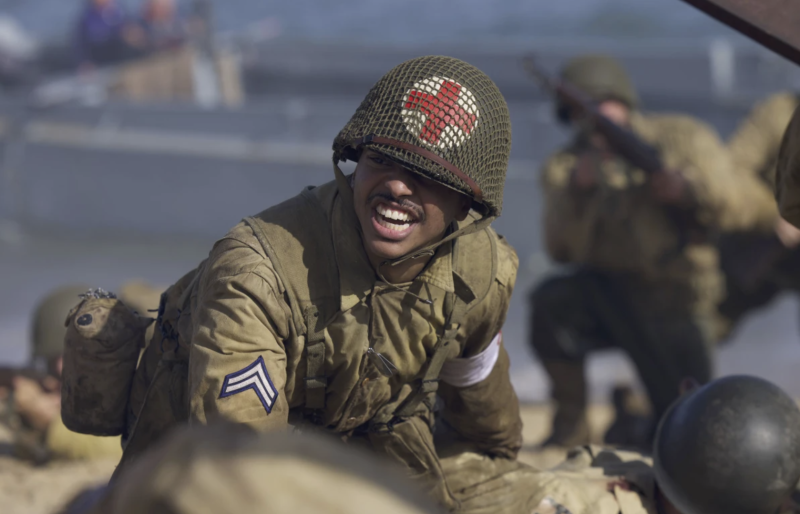“It just feels like a privilege and an honor to be able to shed some light on their stories,” says director Shianne Brown, who helmed the D-Day episode.
Her episode highlighted Waverly Woodson, Jr., a medic who was wounded by shrapnel during the landing but nevertheless spent the next 30 hours treating the wounded and the dying on Omaha Beach. He would note: “There’s no such thing as a color barrier in action.”
Brown says that observation proved so powerful. “If your leg has just been blown off, you need a medic to help you. At that moment, you’re not going to say to Waverly, ‘No, I don’t want you to treat me.’”
Woodson is being posthumously awarded the Distinguished Service Cross. The announcement was made Monday by Sen. Chris Van Hollen of Maryland. Woodson died in 2005.
The series points out that many soldiers of color who fought the Nazis in Europe went home — the Indians back to British colonization and Black Americans to bitter racism — and began agitating for change because of what they’d witnessed and earned. Civil rights icon Medgar Evers, after all, was at D-Day.
“A lot of these men and women never felt like they were human before going to Europe and then being treated like a normal human being by the white population,” says Brown. “I can’t even imagine how that would have felt for them. You’ve been fighting against Hitler and the Nazis and against fascism and hate, and you go home and you experience racial terror.”
The filmmakers found very little footage of non-white soldiers in the archives and so were moved when they finally came across images of a Black unit marching in central England before D-Day or Black soldiers cheering the fall of the Nazis. “It was just very odd to see a Black man in Nazi Germany,” says Elba.
Elba urged the directors and editors to try to put the audience into the action, like the films Saving Private Ryan or Dunkirk. That meant filming recreations of bombings in villages in France, wading into the ocean with heavy gear and soldiers enduring beach strafing.


